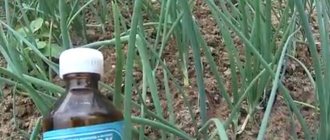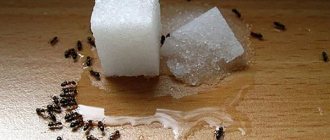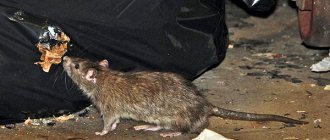Herbs
The easiest way to protect your country house from rats is to use herbs, the smell of which they cannot stand or are afraid of. These include:
- Blackroot. A poisonous plant, the aroma of which is felt only by rodents. They use its branches, previously scalded with boiling water and laid out in different places, or a decoction that is sprayed on the room. To prepare a decoction, dry roots are poured with water in a ratio of 1:10, boiled for 10 minutes, cooled and poured into a spray bottle.
- Tansy. The rich smell of camphor, characteristic of this plant, is very disliked by rats.
- Sagebrush. Dry grass with a bitter-tart aroma is used to cover the perimeter of the home. The saturated decoction is also sprayed onto the likely entry points of rats.
- Tomato tops. It is cut into small pieces and sprinkled thickly around the country house. Rats are afraid of the specific aroma of tops because they contain toxins.
- Coriander (cilantro). They use stems and seeds, which are laid out in the house.
- Peppermint. One of the most effective plants for repelling rats from entering the house.
Related article:
5 practical tips for harvesting and drying herbs for the winter
Essential oil
If suitable plants are not at hand, then the appropriate essential oil can be used instead. Peppermint essential oil is considered the most effective against rats. It is added to water and sprayed on the room or wiped on floors and other surfaces.
To obtain a stronger product, add alcohol at the rate of 10 ml per 300 ml of water and 15 drops of aroma oil. The resulting mixture is used to treat cracks, baseboards, floors and other places.
Ash
It has long been noticed that rats and mice do not appear on ashes, since the alkali contained in the ashes corrodes the skin on their paws. And since they lick it off, the mucous membranes of the mouth and stomach are then damaged. To protect the house, you need to grind the ash into powder and scatter it around the house at the rate of 1 bucket per 6-8 square meters. m.
Related article:
Feeding the garden in the fall
What damage do rats cause?
If there are rats in the area, the roots and seeds will be the first to suffer; they can damage the bark of trees and even the green part of plants. You can detect the presence of a rodent if you accidentally fall into one of its passages dug underground. Rats make large reserves in their burrows, which last for a long time, and they may not appear outside all winter.
In addition to destroying crops , they are carriers of dangerous diseases that can infect people and animals. They live in a pack and, in a state of aggression or fear, attack stronger animals, cats or dogs.
Rats are very fertile , an adult female can give birth to 4-5 cubs at a time, and she can give birth to 2-3 offspring per year. Therefore, if the fight is not started in time, then the proliferating rodents will cause great harm to the area.
Hungry animals do not disdain human supplies; they sneak into barns and often steal eggs. They can even steal small poultry chicks. Thus they scare the animals.
Corrosive substances
Rats are also repelled by harsher, toxic or strong-smelling substances. They are not suitable for use inside the house, so they are used to treat external walls or the adjacent area around the perimeter.
Such means include:
- Kerosene. Spray likely rodent entry points or place containers in the attic and/or basement. In this case, it is necessary to observe safety precautions, since kerosene is very flammable.
- Naphthalene. Naphthalene powder is mixed with sawdust and used in the same way as kerosene.
- Turpentine. The liquid has a depressing effect on pests. External walls are coated with turpentine or installed in containers.
Determining the presence of rodents
The first question in solving the problem under discussion will be - how to understand whether there are rats on the site? Of course, if you just noticed them, then the question will disappear by itself. But in general, these rodents are very secretive, they try to avoid human gaze, so they often have to judge by indirect signs:
- chewed food packaging;
- holes made in various parts of the house (floors, walls, etc.);
- broken wires;
- the appearance of excrement and the smell of rats, which is very specific.
A specific subspecies of rodents, the so-called “ground rats,” usually operate in a garden or summer cottage, eating many types of plants, seeds, and even tearing up sown beds.
If the listed signs of the presence of rats are detected, you should immediately proceed to their destruction.
Burnt remains
Another class of substances that rats cannot tolerate are burnt or burned remains of certain substances:
- Burnt feathers or down. You can burn any feather, but duck down has the most repulsive smell. The burnt remains are mixed with starch and scattered around the house.
- Burnt rubber. Rats are afraid of this smell and immediately leave the area where it is smelled. Pieces of rubber are placed in a metal container, poured over with flammable liquid and allowed to burn. The burned parts are laid out around the house. The container retains the smell well, so it is also used for repelling.
Related article:
5 ways to effectively use baking soda in your garden
But the most effective protection is provided by burnt rat fur, which causes its relatives to feel a strong sense of danger. This method has been used by people since ancient times. To do this, the skin must first be removed and then set on fire. The resulting residue will be the most effective rat repeller.
Ultrasonic repeller
If you do not want to use the means described above, then you can protect your country house from rats using ultrasound-based electrical appliances. They emit waves that are inaudible to humans, but cause panic in rodents. Therefore, those living in the house leave it, and new ones pass by. Among the models, it is recommended to pay attention to Tornado-200, Electro-Cat Turbo, Chiston-2.
When using such a repeller, it should be taken into account that ultrasound propagates only in open space and does not penetrate into adjacent rooms. Therefore, for the winter it is advisable to install one device in each room. Moreover, for such a long time you need to connect them to the power supply, since the batteries will quickly turn off in the cold, and the repeller will cease to perform its functions.
How to get rid of rats and mice in a private home
How to defeat a rat infestation in a private home?
The question is incredibly difficult. As experience has shown, not all means are good in this fight. Unfortunately, I had to verify this from my own experience. With the first frosts, it seemed like uninvited guests came to our house. We began to suspect this after something “boomed”, rustled and rang. After just about three weeks, the cautious noises turned into thundering madness.
While we were thinking about the humaneness of the methods and the inadmissibility of using poisons in the house, the rats began to multiply exponentially. And then we began to use all possible methods suggested to us, which we were assured would work 100 percent, but it turned out to be quite the opposite. But more about this...
From neighbor to internet
Where can I get the necessary information? The easiest way is to use smart tips from the World Wide Web. “A mousetrap is the most tested and reliable means of fighting rodents,” as it is written as a carbon copy on the Internet.
Indeed, my neighbors, using this simple device installed under the bathroom sink, caught all the mice. We had to fight a more serious enemy. Experienced fighters for sanitary cleanliness of houses note that it is much easier to defeat mice than their more intelligent relatives, rats.
They don't fall for the same trap twice. Rats are capable of thinking and analyzing: if one individual from a large family dies, an analysis is immediately carried out and the entire family will avoid this source of danger.
Mousetraps also have sizes
It turned out that these traps come in different sizes: miniature ones for catching mice and larger ones for rat “hunting”. You can find this device on the Internet for more than 2 rubles.
This happened only once. Never again, none of the rodents fell for this trap. No matter how much we ventilated and washed the mousetrap, no matter how much we placed it on the most tricky paths, the rodents masterfully avoided the dangerous obstacle and did not succumb to the alluring smell of cheese or other baits.
Crazy pens and glue
Delighted with the first result, we stated: one - zero in our favor! But the rats immediately struck back - they chewed through the cord from the refrigerator, which, moreover, was energized at that time. We immediately understood that this was revenge. There was nowhere to retreat.
Neighbor Maxim came to the rescue:
— Try making a glue trap. Place some seeds on a piece of hard cardboard and spread special glue on it. It is sold in all gardening stores. I put such a trap under the kitchen set: every night, a mouse would come across it.
But, alas, glue bait for our rodents turned out to be an overly naive method of control. Meanwhile, the husband was making another “correct” remedy, according to experienced mouse fighters. I took a 3-liter jar with a screw-on metal lid from my supplies.
I dug a hole in the center of the lid and cut about seven rays from it, which I slightly bent inward. It turned out to be a kind of mink. A lot of goodies were placed inside the jar: fried seeds, sunflower oil. They placed the jar on its side on the path in the hope that the rodents would like the house.
As the authors of this can invention guaranteed, the rodent will definitely crawl into the hole to feast on it, but will not be able to get out because the sharp teeth of the metal lid will be directed at it and will prick it. But our rodents had a different logic. Not a single rat ever used the jar trap.
This happened only once. Never again, none of the rodents fell for this trap. No matter how much we ventilated and washed the mousetrap, no matter how much we placed it on the most tricky paths, the rodents masterfully avoided the dangerous obstacle and did not succumb to the alluring smell of cheese or other baits.
Crazy pens and glue
Delighted with the first result, we stated: one - zero in our favor! But the rats immediately struck back - they chewed through the cord from the refrigerator, which, moreover, was energized at that time. We immediately understood that this was revenge. There was nowhere to retreat.
Neighbor Maxim came to the rescue:
— Try making a glue trap. Place some seeds on a piece of hard cardboard and spread special glue on it. It is sold in all gardening stores. I put such a trap under the kitchen set: every night, a mouse would come across it.
But, alas, glue bait for our rodents turned out to be an overly naive method of control. Meanwhile, the husband was making another “correct” remedy, according to experienced mouse fighters. I took a 3-liter jar with a screw-on metal lid from my supplies.
I dug a hole in the center of the lid and cut about seven rays from it, which I slightly bent inward. It turned out to be a kind of mink. A lot of goodies were placed inside the jar: fried seeds, sunflower oil. They placed the jar on its side on the path in the hope that the rodents would like the house.
As the authors of this can invention guaranteed, the rodent will definitely crawl into the hole to feast on it, but will not be able to get out because the sharp teeth of the metal lid will be directed at it and will prick it. But our rodents had a different logic. Not a single rat ever used the jar trap.











